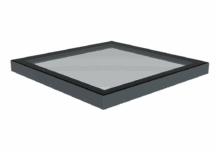The materials and techniques used in the construction of high-rise buildings have come under scrutiny following the tragedy at Grenfell Tower where a fire tore through a west-London high-rise apartment block. The death toll is currently confirmed at 30, but further fatalities are expected.
It should be made clear, however, that as it stands the cause of the fire is yet to be determined, but the cladding and insulation materials used in the recent renovation of Grenfell Tower and their installation have come under the spotlight.
The Fire Sector Federation’s statement in the immediate aftermath of the Grenfell fire touches on this point: “The FSF has long expressed major concerns about the apparent disjoint in the processes which aim to ensure fire safety within the built environment, as well as concerns about the combustibility of certain modern building materials.”
The statement continued: “While we must wait for a full investigation into the cause of the fire and the reasons for such rapid fire spread in this tragic incident, the Fire Sector Federation will be continuing to campaign for improvements in fire safety legislation and in ensuring the safety of the public and our built environment.”
The Association for Specialist Fire Protection similarly stated: “The incident highlights a number of concerns regarding fire safety in the built environment and demonstrates how vigilant we must all be when designing, supplying and installing fire protection in buildings.”
Questions are being asked as to how a tragedy like Grenfell can happen in the 21st Century, especially following the reviews and investigations that took place following the fire at Lakanal House in 2013. With this in mind, communities secretary Savid Javid confirmed to Radio 4 that all 4,000 high-rise tower blocks in the UK similar to Grenfell Tower will face inspections.
Reynobond cladding was installed by contractor Harley Façades at Grenfell Tower, and Celotex has confirmed that its insulation materials were used for the Grenfell Tower renovation. Celotex has posted a statement on its website saying: “Our thoughts are with those affected by the terrible fire at Grenfell Tower in London. Our records show a Celotex product (RS5000) was purchased for use in refurbishing the building. Full technical information on all our products is available here on our website. If required, we will assist with enquiries from the relevant authorities at the appropriate time. Due to the nature of this developing situation it would be inappropriate for us to comment or speculate further on this tragedy.”
Since then, Celotex has updated the statement to read: “As with the rest of the nation our thoughts continue to be with those affected by the terrible fire at Grenfell Tower in London. On Wednesday, as soon as we were able to, we confirmed that our records showed a Celotex product (RS5000) was purchased for use in refurbishing the building. We wanted to provide an update to that statement and provide further information as we are able to.
It is important to state that Celotex manufacture rigid board insulation only. We do not manufacture, supply or install cladding. Insulation is one component in a rainscreen system, and is positioned in that system behind the cladding material.
As we previously stated, our records show a Celotex product (RS5000) was purchased for use in refurbishing the building. This product has a fire rating classification of Class 0, in accordance with British Standards. Celotex RS5000 is the insulation component specifically tested as part of a system to British Standard BS8414-2:2005. When the system is designed and installed in line with this, RS5000 meets the criteria set out in BRE Report BR 135 ‘Fire performance of external thermal insulation for walls of multi storey buildings.’
We will of course assist the relevant authorities fully with any enquiries they have.”
As mentioned earlier, the investigations are ongoing and we will bring you updates as and when we have them.



